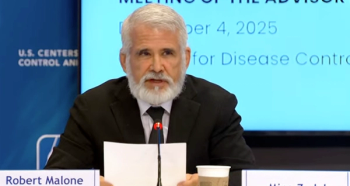
- Medical Economics September 2021
- Volume 98
- Issue 9
We must address the causes of burnout
Burnout is real and so is the terrible mental health toll it inflicts on physicians, healthcare professionals of all types and their families. That’s why learning to identify it and developing strategies to regain your resiliency are so important.
Physician burnout is a major concern for our profession, not only for our present workforce but because the long-term effects stand to jeopardize our future supply of physicians. Burnout is real and so is the terrible mental health toll it inflicts on physicians, healthcare professionals of all types and their families. That’s why learning to identify it and developing strategies to regain your resiliency are so important.
This issue of Medical Economics® will examine burnout. For many older physicians, burnout is not a new subject. I can say from personal experience that burnout becomes an issue for almost everyone sometime during their career. It has been a hidden risk of a career in medicine for decades.But are we better at recognizing it and dealing with it now? I fear we aren’t.
From my personal perspective and from talking to colleagues over the last couple of years, I have become increasingly concerned for our profession. There is so much physician and health care professional dissatisfaction out there. Although the root cause of burnout has changed over the years, its effect has not. Physicians still have higher suicide rates than the general population, and it is estimated that 28% of residents experience a major depressive episode versus only 7-8% of the general population.(1)
We are also seeing physicians retiring early, changing jobs, and becoming more disengaged. The most worrisome trend is its prevalence among mid-career professionals. Without a concerted effort to reverse the causes of this dissatisfaction, we risk not only our current but the future physician workforce in this country.
I remember well my time in medical education working on primary care workforce development and recruitment. Despite all the effort, initiatives and policy advances, the most striking problem was the difficulty of convincing bright young medical students to enter a career where the physicians they saw in practice were unhappy. I would say the same problem is present now, not affecting career choice while in medical school, but rather whether our best and brightest will even choose medicine as a career at all.
In my early years of practice, physician burnout was most often attributed to long hours, lack of work-life balance, the pressure of clinical responsibility and the burdens of call and leadership.
Now the most cited reason in numerous studies and surveys is administrative burden (EHRs, prior approval, administrative tasks). That is followed closely by work hours, lack of control over clinical schedules, loss of clinical autonomy, payment complexities, and lack of respect for the profession in general. These are compounded by a physician access problem and need for more physicians, particularly in rural areas.
But rather than a major effort to increase the supply and distribution of physicians, there are more and more new provider types and ways being used to fill the gap, leaving physicians feeling ever-more devalued. The same can probably be said of our critical shortage of bedside nursing.
There has been talk of moral injury in describing what physicians and other health care professionals are experiencing today. Whether that is the best descriptor is unclear, but what is now clear is that the practice of medicine and the patient relationship has shifted to corporate control. Whether it is large hospital systems, insurance companies or new venture capital- backed, for-profit companies, the doctor-patient relationship has been replaced by the provider-consumer relationship. The practice of medicine has been replaced by the business of medicine. This most certainly has influenced physician satisfaction and sense of respect for the system.
I hope we will take physician and health care professional burnout seriously and provide attention and support for those in need, so we don’t lose this nation’s most valued health care asset. While we absolutely must examine the specific causes of stress and dissatisfaction and make changes, we should also identify the systemic and structural elements and policies that have led to such dissatisfaction among our physicians and health care workforce.
L. Allen Dobson Jr., M.D., FAAFP,
is a family physician and Editor-in-Chief of
Medical Economics®.
Articles in this issue
about 4 years ago
Overcoming obesity mythsabout 4 years ago
Yes, personalized digital interventions actually workabout 4 years ago
Intellectual property: What every medical practice needs to knowabout 4 years ago
Stop lifestyle creep before you’re in too deepabout 4 years ago
Are tax hikes coming?about 4 years ago
How practice culture affects physician burnoutover 4 years ago
The future of physician waiting roomsNewsletter
Stay informed and empowered with Medical Economics enewsletter, delivering expert insights, financial strategies, practice management tips and technology trends — tailored for today’s physicians.















